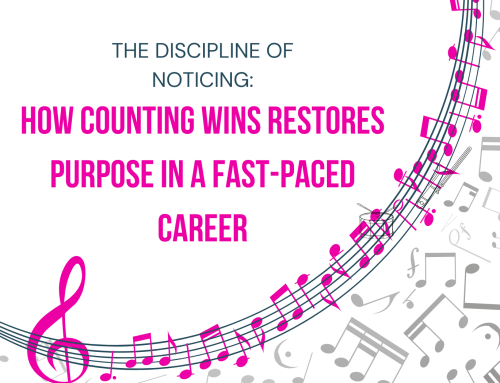By José Valentino Ruiz, Ph.D. & Robert Acevedo Jr.
Table of Contents
The Cultural Cost of Mislabeling Confidence
For many arts entrepreneurs, confidence isn’t optional—it’s earned. It’s the product of long hours, risk-taking, self-investment, and relentless vision-building. In many cultures, confidence is expressed vibrantly, artistically, even communally. To mistake that for arrogance is to deny the person’s background, expression, and process.
Consider the artist-entrepreneur from a heritage where bold storytelling and vibrant communication are part of cultural DNA. Their presence is animated, their speech impassioned, and their work ethic unrelenting. But when these traits enter institutional spaces—academic conferences, faculty meetings, advisory committees—they may be met with patronizing glances or the subtle, coded language of “tone it down.” Why? Because the dominant cultural norm has often elevated subdued intellectualism over lived expertise.
But this is not merely about personality types—it’s about power. When someone with real-world industry knowledge, hustle-born strategy, and street-tested insight speaks up, it can unsettle those whose authority rests on theoretical frameworks rather than field experience. Their reflex might not be curiosity—it might be dismissal. They may label the voice “arrogant” because it doesn’t match the institutional decorum they expect.
Confidence Is a Heart-Reaction, Arrogance Is a Mind-Deception
Here’s where the distinction becomes essential:
Confidence is rooted in the heart—it flows from a deep awareness of these four P’s: 1) preparation, 2) process, 3) purpose, and 4) people. It says, “I’ve put in the work. I know what I’m doing. I want to share it because I believe it can help others.”
Arrogance, by contrast, is a trick of the mind—it says, “I always deserve attention. I am entitled to respect, regardless of effort.”
Confidence is tempered by gratitude; arrogance is driven by insecurity. The confident artist still feels awe when walking into a studio, classroom, or stage. The arrogant one assumes they own the room before the first note is played. And yet, too often, confident individuals are miscast because of how others feel around them—not because of what they actually say or do.
The Emotional Insecurity of the Spectator
This brings us to an uncomfortable truth: much of what is called arrogance is projection. The term, “arrogance”, is weaponized when someone else’s excellence reminds us of our own passivity. Instead of asking, “What can I learn from this person?” the insecure mind says, “Who do they think they are?”
This reaction is especially prevalent when the confident person bypasses expected systems. Entrepreneurs—those who generate their own platforms, take their own risks, and don’t wait for permission to create—challenge conventional structures. Their momentum can feel threatening to people conditioned to wait for validation, grants, or institutional green lights. Instead of recognizing drive, we reduce it to ego. But let’s be honest: in the creative economy, waiting too long often means irrelevance.
The Grind Breeds Confidence—Not Entitlement
We must also consider the environment from which most entrepreneurs emerge. The “field” isn’t soft. It’s not the climate-controlled office space with a university logo on the door. The field is the unpaid gig, the four-hour rehearsal, the overnight edits, the grant rejection, the twenty-ninth pitch that finally lands. Confidence forged in the field isn’t prideful—it’s protective. It’s the psychological armor that allows artists to keep showing up despite the fatigue, criticism, and continual expectations of the marketplace.
This confidence is holistic. It includes logistical awareness, audience psychology, financial acumen, and aesthetic vision. That’s why many entrepreneurs speak with decisiveness. It’s not because they disregard others’ opinions. It’s because they carry a full stack of roles—artist, marketer, manager, producer, executive, communicator, educator, advocate—and must constantly integrate knowledge across disciplines. They are accountable not only for creativity but for outcomes, payrolls, and cultural relevance.
Rethinking “Modesty” in Interdisciplinary Spaces
The arts need to have an honest reckoning with how we define “modesty” and who we expect to perform it. True humility is not pretending you don’t know what you know. Nor is it deflating your accomplishments to protect someone else’s comfort. Humility is the posture of openness, the willingness to keep learning, and the courage to speak the truth of your journey—not the suppression of your success story.
When we encourage artists to “be more modest,” we must ask: is that invitation rooted in healthy communal values—or in fear of being outshined?
This is especially problematic in academia, where those who are visible, published, and productive in external circles are sometimes met with internal suspicion. Ironically, the people who are most “in the field” are sometimes the least understood within their own institutions. But in today’s world, the walls between academia and industry are porous. We can’t afford to shame the messengers who are building the bridges.
Choose to Empower, Not Alienate
At some point, every institution, every department, every stakeholder, and every team must choose: will we alienate confident voices out of discomfort, or will we empower them for the growth of our collective mission?
Creative professionals and entrepreneurs are not threats—they are assets. They carry the vision, the grind, and the strategic instinct that tomorrow’s cultural economy demands. When we shut them down, we don’t preserve humility—we hinder progress.
We must stop confusing the style of communication with the substance of contribution. Loud is not arrogant. Passionate is not egotistical. Fast-paced is not self-absorbed. Let us listen not just to the tone—but to the testimony.
Confidence, Stewarded Well, Is a Public Good
When you see someone show up with fire in their heart, clarity in their words, and evidence in their work—don’t recoil. Lean in. There’s something to learn. And if you’re the one carrying that confidence: don’t dim it for those still battling self-doubt. Let your excellence serve others, not to dominate them, but to invite them higher.




Leave A Comment